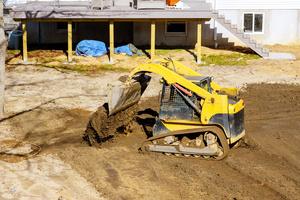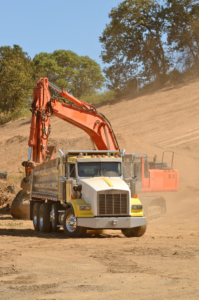Introduction
Sustainability is now a key part of modern construction. One powerful way to build responsibly is with sustainable fill dirt. This material supports your project and helps the planet. It’s made from recycled or reused sources. It reduces waste and promotes healthier soil conditions. Whether you’re a homeowner or a contractor, it’s a smart, eco-friendly choice. This guide explains what sustainable fill dirt is, how to use it, and why it matters. Let’s build better—together.
What Is Fill Dirt and Its Traditional Uses?
Fill dirt is compacted subsoil used to fill low areas and build up ground. It creates a strong foundation for structures. Most traditional fill dirt comes from digging on construction sites. It’s used in roadwork, landscaping, and grading. This material compacts well and resists settling. But traditional fill dirt has a downside. Excavating and hauling dirt impacts the environment. It increases erosion, disrupts habitats, and adds to pollution. Sustainable fill dirt changes this by offering a better solution.
The Importance of Sustainability in Construction
Construction uses massive amounts of material and energy. It also creates a lot of waste. That’s why builders are turning to sustainable practices. Using eco-friendly construction materials is a great place to start. These materials reduce waste and conserve resources. They include sustainable fill dirt, recycled concrete, and reclaimed wood. Choosing better materials helps protect the planet. It also saves money in the long run. Builders who focus on sustainability build smarter, cleaner, and more responsibly.
Benefits of Using Sustainable Fill Dirt
Sustainable fill dirt offers big benefits. It’s made from clean, reused materials. This reduces the need for new excavation. That means less land disruption and fewer emissions. It also lowers the amount of dirt sent to landfills. Many sustainable fill options are enriched with compost. That makes them healthier for plants and grass. They support better landscaping results. This dirt is stable, safe, and perfect for most projects. It’s a win for your job—and the environment.
How to Source Eco-Friendly Fill Dirt
Start by checking local suppliers. Many now offer recycled fill dirt options. Ask if their material is screened and clean. You want fill dirt free of chemicals or debris. Look for suppliers with good reviews and clear sourcing methods. You can also ask nearby contractors. Many have leftover dirt from job sites. Some will even donate or sell it affordably. This helps you cut waste and save money. Make sure to ask about the dirt’s origin and test results when possible.
Key Considerations for Using Fill Dirt in Your Project
Not all fill dirt is the same. First, think about your goal. Are you building a base or improving a lawn? Use coarse, compactable fill dirt for strong foundations. Use nutrient-rich dirt for gardens or softscapes. Always confirm the dirt is clean and contaminant-free. You can request test reports from your supplier. Next, focus on compaction and drainage. Compact the dirt in layers. Always slope away from buildings to avoid water issues. These steps keep your project solid and safe.
Comparing Sustainable Fill Dirt to Traditional Options
Traditional fill dirt often lacks nutrients and comes from excavation. It’s effective but not always eco-friendly. Sustainable fill dirt is usually cleaner and healthier for soil. It’s also better for the environment. Traditional dirt adds to landfill waste and fuel use. Recycled dirt reduces both. In many cases, sustainable options improve plant growth and drainage. Costs may be similar or even lower. The long-term savings and environmental benefits often outweigh the initial price difference.
Case Studies: Successful Projects Using Sustainable Fill Dirt
A community park in Virginia used sustainable fill dirt to rebuild garden beds. The recycled soil was rich in compost. It supported healthy plant growth with less maintenance. In Maryland, a builder leveled land using dirt from a nearby site. This cut fuel costs and helped avoid landfill use. Another homeowner in Fairfax used sustainable fill for grading and saved over $500. These real examples show the power of smart dirt use. It’s simple and sustainable.
Tips for Implementing Sustainable Practices in Your Construction Project
Choose local materials to cut transport emissions. Use eco-friendly fill dirt whenever possible. Reduce, reuse, and recycle what you can. Work with suppliers who support green building. Plan projects to limit waste. Reuse soil, rock, or gravel already on-site. Design for natural drainage to reduce erosion. Communicate with your crew about green goals. Small changes make a big impact. Every decision adds up to smarter building.
Conclusion: The Future of Eco-Friendly Construction Solutions
The future of building is green. Sustainable fill dirt is just one example of better choices. It reduces waste and helps your site thrive. Whether you’re leveling a yard or building a foundation, it works well. It’s a smart, responsible alternative to traditional dirt. Choosing eco-friendly materials improves your project and protects the environment. Let’s keep moving toward cleaner, more thoughtful construction. You can start today—with the dirt under your feet.
Need Dirt Delivered?
For eco-friendly dirt and material delivery, contact Dirt Connections. We offer reliable service, fast delivery, and expert support. Whether you’re a homeowner or a contractor, we’re here to help you build better. Let’s work together to get your job done right.
Order Material & Pricing Here
Summary

Dirt Connections was started with one goal in mind: providing quality residential and commercial construction services to clients on time and on budget. Reach out for more information on how we can support your next project.
For your convenience our estimates are free and by appointment. Call 703-940-9949 for a free estimate today!









































